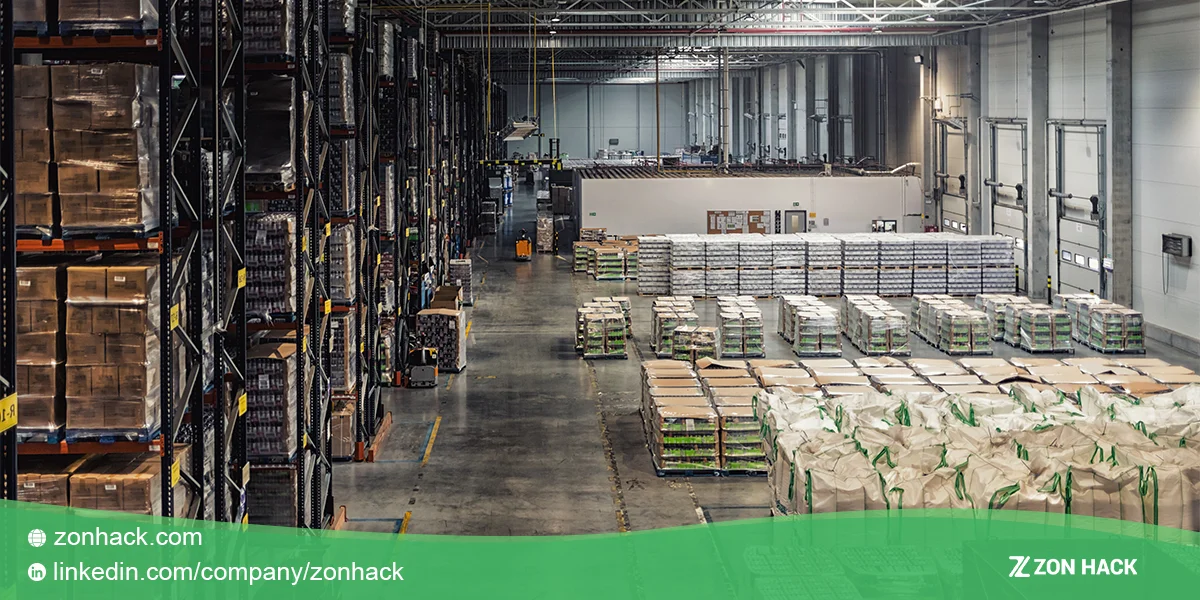What Is Amazon Warehousing & Distribution
Amazon has recently introduced a new program that is called Amazon Warehousing and Distribution (AWD). This new service by Amazon is a third-party logistics solution that provides long-term and cost-effective storage facilities to sellers. You can ship in bulk inventory to Amazon’s Distribution Centers and seamlessly replenish to Fulfillment Centers.
According to a recent US sellers survey the three biggest issues for sellers in Warehousing and Distribution operations are –
- High storage costs
- Insufficient storage facility
- Complicated pricing structure
To overcome certain issues Amazon came up with this third-party Warehousing and Distribution solution. Harris Chan, senior manager at AmaMax, said, “Automated replenishment and master case handling is the key of the program.” Amazon shared more details on how AWD works at Amazon Accelerate, the annual seller conference that was held on September 14-15, last year.
Signing Up with AWD
It is easy to get started with AWD for existing sellers on Amazon. In your Amazon seller account, go to the “Inventory” menu, and there you will find an option to “Store and Distribute” with Amazon. This is the option where you can manage the Amazon Warehousing and Distribution program, the good news is that there is a one-click signup process available currently.
Features & Benefits
You are allowed to store your bulk inventory as long as you need under this new program. AWD will also have the feature of pay-as-you-go pricing for storage and distribution.
Enrolled sellers can enjoy smooth inventory management with the Amazon Fulfillment Network (AFN) as well as auto-replenishment. With this auto-replenishment, you don’t have to worry about going out of stock.
You can also affiliate your inventory in a single place so that it can be used to fulfill all orders from different sales channels. In a nutshell, some key benefits offered are –
- Easy Enrollment: Hassle-free signing-up process with just a few clicks.
- Bypass Storage Limits: Amazon Warehousing and Distribution program offers bulk storage capacity, this way sellers can bypass storage limitations and store their inventory as long as they need without any long-term contracts.
- Low Operating Cost: Sellers need to stay more accurate with their expenses to stay profitable and grow their business. AWD offers a great revival here with an alternative to high-price warehouses and the costing is simple, transparent charges with no hidden fee.
- Efficient Inventory Management: Once you integrate your upstream inventory into the Amazon Fulfillment Network (AFN), your inventory is managed smoothly with AWD.
- Auto-replenishment: AWD allows an automated replenishment feature with a 99% in-stock guarantee, so you never have to worry about going out of stock.
- Inventory Affiliation: With this new AWD service, sellers can send their products to multiple sales and distribution channels to fulfill orders. You can consolidate your inventory into a single pool to cut your cost handle easily.
How Does AWD Work
Once you sign up for the program, you can start using it, which takes only a few simple steps –
- Send your eligible inventory in bulk to Amazon Distribution Centers using Amazon Global Logistics or any other carrier.
- Store your inventory as long as you need with a straightforward pay-as-you-go pricing system.
- Monitor your inventory using Global Inventory Management.
- Keep track of your automatically replenished inventory via the Shipping Queue.
- Your inventory is consolidated into a single global pool and this “pooled inventory” will help you enhance your customer service with a low cost for storage and fulfillment.
Amazon sellers should meet certain eligibility requirements before utilizing the program.
Prohibited Products
- Perishable goods.
- Dangerous goods/any hazardous material prohibited by Amazon.
- Jewelry, shoes, watches, Amazon devices, gift cards, high-value products, and groceries are excluded categories.
Size Guidelines
To avoid restriction, your inventory cartons should be smaller than 25 inches long, 25 inches wide, 36 inches high, and weigh at most 50 lbs. There are also instructions for the size and weight of SKUs inside the carton. Individual SKUs should be smaller than 18 inches long, 14 inches wide, 8 inches high, and must weigh below 20 lbs according to AWD standards.
Amazon Fulfillment Centers (FBA) vs. Amazon Distribution Centers (AWD)
Amazon Fulfillment Centers are the short-term storage facilities where Amazon sellers need to figure out their own ways to ship inventory to Amazon Fulfillment Centers. Under FBA, Amazon covers the pick, pack, and shipping stages of the order fulfillment process and is meant to provide the customers with the products purchased. While some sellers may need inventory storage options before using FBA, they are the right candidates to utilize AWD, shipping inventory to Amazon Distribution Centers for warehousing.
Amazon Distribution Centers work as intermediate long-term bulk storage solutions and automatically distribute goods, ensuring upstream inventory storage with lower prices and in large quantities. Moreover, automated replenishment allows sellers to transfer the inventory from Amazon Warehousing and Distribution Centers to Amazon Fulfillment Centers with only a few clicks when their stock runs low. Some sellers may need inventory storage options before using FBA, they are the right candidates to utilize AWD, shipping inventory to Amazon Distribution Centers for warehousing.
A Simple, Transparent Pricing Model
One of the utmost differences between Fulfillment by Amazon (FBA) and AWD is the pricing policy. This could be the most prominent factor for sellers to decide whether to get on board with AWD or not. Here are the three types of fees related to Amazon Warehousing and Distribution –
- Storage Fees: As discussed, AWD eliminates the storage limits and common storage fees with FBA and other third-party solutions. AWD has offered a single and straightforward fee structure based on the physical volume of inventory. The result made paying for inventory storage much more predictable. Storage costs depend on the time of the year and are charged monthly. According to the current available rate, during the months of January through September, AWD charges $0.42 per cubic foot, and during the holiday months of October through December, $0.80 per cubic foot.
- Processing Fees: Amazon charges a fee for manually processing the inventory coming from the seller’s supplier. This is more like the fee charged for Amazon FBA inventory manual processing. The difference is that AWD charges this processing fee per case instead of per item, while FBA charges per item. The current AWD processing fee is set at the rate of $2.00 per case.
- Transportation Fees: To cover the cost of shipping inventory from the seller’s supplier to Amazon Warehouses and Distribution Centers, AWD charges an inbound transportation fee. The fee is again a single and straightforward volume-based calculation. The current AWD transportation charges are set at $1.00 per cubic foot.
Final Thoughts
Amazon took a great initiative for third-party sellers and sellers requiring more storage capacity without any unnecessary costs, and the new service seems like a win-win deal for both Amazon and its sellers. Starting in 2023, sellers will be able to send inventory to any location, including wholesale buyers and brick-and-mortar stores. AWD addresses existing supply chain challenges and aids sellers to meet the needs of their growing businesses. The launch of AWD will open a new era for supply chain management if the program becomes successful.




